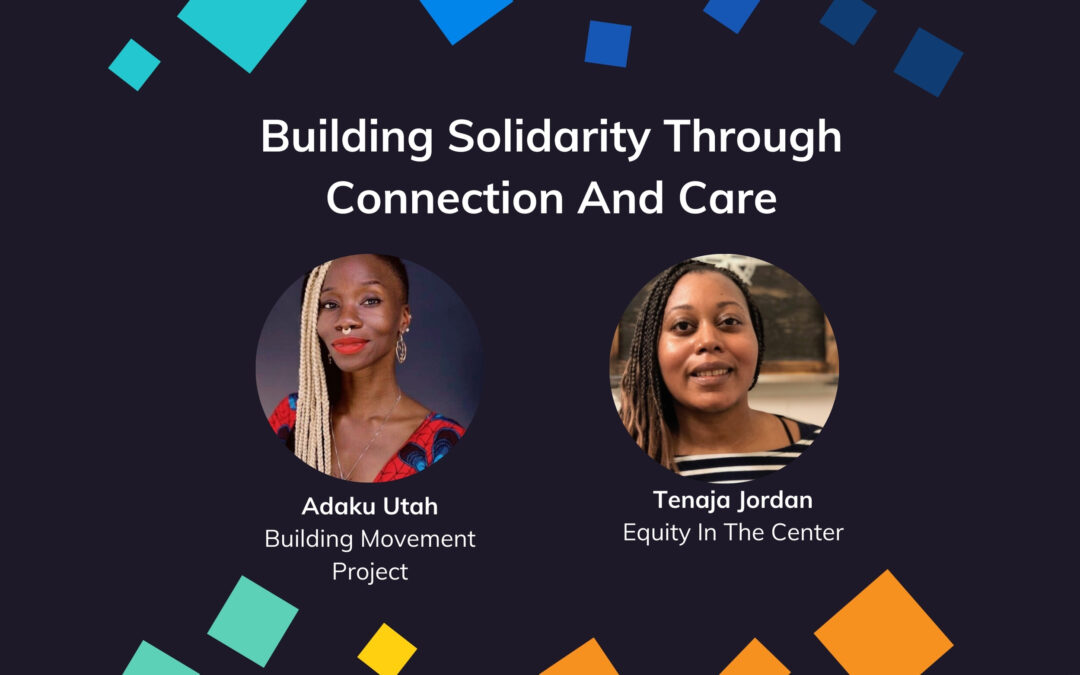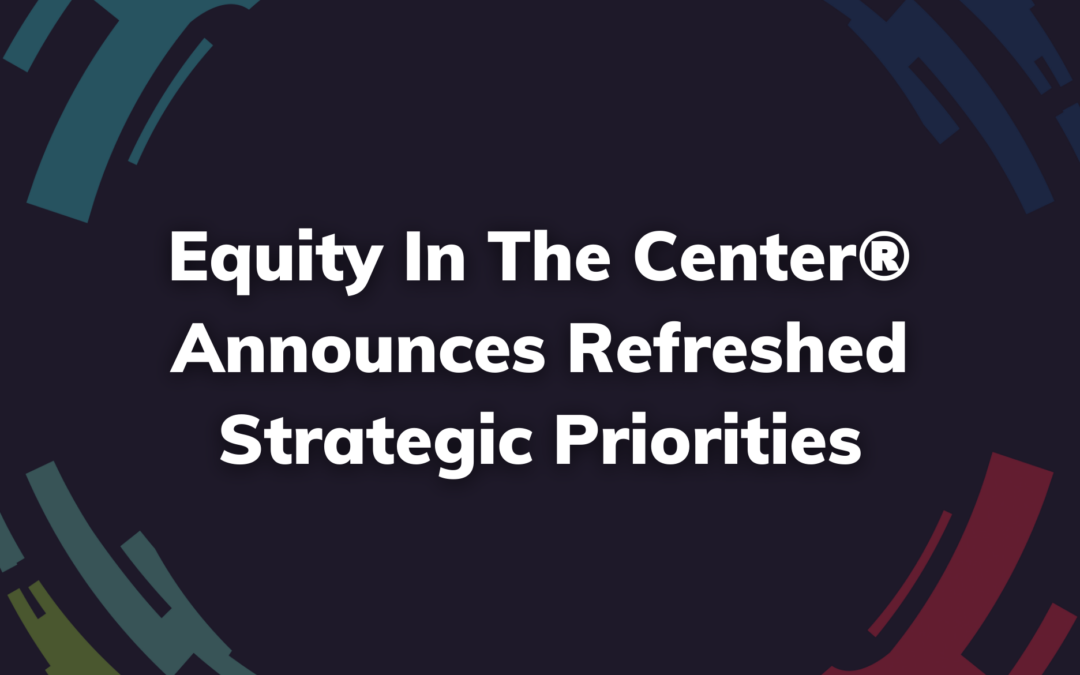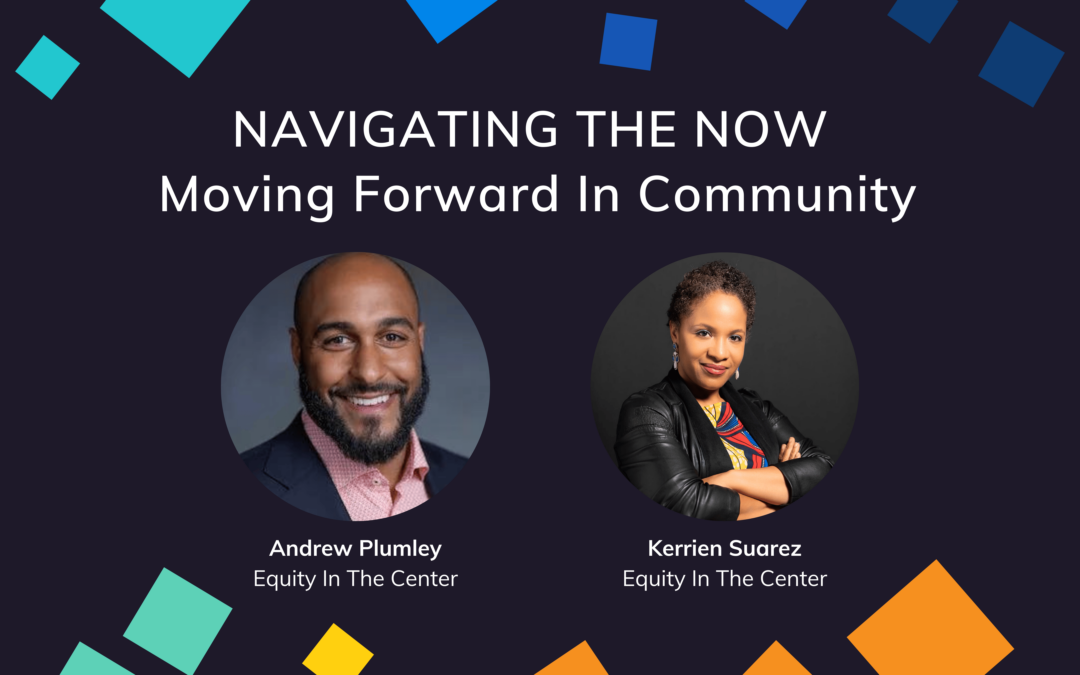Nicola Chin, Founder, Up With Community
@nicolamchin @upwithcommunity
Note: This guest post is a review and expansion of a workshop offered at the October 2018 Equity in the Center Summit.

At some point in moving through the cycles of Awake to Woke to Work on a project, I usually get hit with a bucket of ice. Let’s be real – sometimes it’s a dump truck of ice.
It happens every time, and it’s a gift.
We uncover the implicit, unsaid, invisible, intentionally hidden, or subconscious elements of the work that have been holding a team back. We find the stumbling blocks to helping them live a Race Equity Culture. It is the critical choice point for the project: go deeper into melting the ice, or get frozen.
That is where most equity projects fall down. If we have not designed an equity project that can withstand the rush of ice we’ve uncovered, the project will falter, implode, or recede. Each team has its own unique ice bucket tied to the individuals, organizational history, identities, and team dynamics they face. We can’t write a list of the top 3 equity challenges your team will face. We can explore the design elements that help teams navigate their own unique challenges.
Designing healthier equity projects
Over the last six years, we’ve had the honor to learn from and with wise organizational partners and transformational consultants/coaches who have helped us learn about designing healthier equity projects. Together, we’ve explored three often overlooked elements of design that can help an organization better navigate their ice and move through the cycle of Awake to Woke to Work:
- Accounting for the role of our brains/body in equity learning
- Clearing up common miscommunications on purpose and outcomes
- Investing in healthier learning environments
These elements can give teams the strength, tools, and relationships they need to melt their own ice.
Before we dive in, let’s be clear about something. We haven’t figured this out yet, and I’m not writing this blog post as some “expert”. We wanted to share some of our field notes from our shared seeking, hypothesizing, and experimenting in the hopes that they might serve your journey, and that we might learn from your experiences, too.
Accounting for the role of our brains/bodies in equity learning
There is incredible work happening on the exploration of our brains, bodies, and the connections that can best serve learning – from Gestalt, to Generative Somatics, to Restorative Justice, and Mind-Body integration. Connecting our minds and bodies is not the new work of our generation. It is work our ancestors have done for millennia that we are recovering, resurfacing, and reconnecting to. And, this isn’t stuff you do only in your ice breakers, or your relational closings or as an “energizer”. This learning must be integrated throughout the design of all elements of a project – from how you first meet an organization, to how you build a core team, how you prepare folks to learn, and who learning continues outside and around meetings and workshops.
There can be lots of different reasons we leave this learning on the margins. Sometimes it’s because trainers haven’t invested in professional development in these areas. Sometimes it’s because we think a client will find it “too touchy feely”. Whatever the reason, pretending like the subconscious and the neuro-pathways of our body aren’t at play in equity projects does us no favors.
At Up With Community, we often say that one of our goals in equity projects is to help individuals make stronger pathways to move between their fast and slow brain – to bridge learning between their subconscious and their conscious. By investing in learning how to connect the slow brain and the fast brain, we can build equity projects in which real transformation can take place. Here are some more examples of more useful practices – we’ve linked to a few sites here. Send us what you’ve been interested in and we’ll keep sharing – nicola@upwithcommunity.org.
Clearing up common miscommunications on purpose
There are two activities we’ve come to do within every project before we begin to set goals or benchmarks.
First, we take time to deeply unpack common terms that people often think they know the answer to, such as: diversity, inclusion, equity, power, social identity, systemic change, justice, freedom, and more (See page 24 of Equity in the Center’s publication for a glossary.). Sure, we may all be familiar with making sure groups know the difference between equity and equality – but have we started to unpack the difference between inclusion as “welcoming the stranger” and as a “process of mutual transformation”. Or the moral/ethical differences between diversity, inclusion and equity. Have we unpacked our fear of the phrase “racial justice”? Have we uncovered our skepticism or cynicism about the possibility of freedom?
We don’t simply need to spend time aligning on definitions of words or academic frameworks for racism. We need to unpack the emotions, assumptions, and desires tied to these words before we can align on what we mean by the goals or outcomes we set.
As we move towards setting goals and outcomes, we often see groups take their best practices of goal setting and throw them out the window. Teams feel so overwhelmed or rushed in our work that we set incomplete or misaligned goals and outcomes. Sometimes teams feel “diversity” level goals aren’t good enough so they set more ambitious goals that they really aren’t ready for. Or, they think they want “equity” but, because they don’t understand the term, they actually set “diversity” style goals leading to lack of trust in the process or confusion.
We encourage groups to use a tool we learned from Rockwood and the Social Transformation Project (and many other great orgs have helped develop or use along the way) – POP:
- Purpose – Why are you doing this?
- Outcomes – What do you want to be different in the world? What are you measuring, and how?
- Process – Types of design elements you might use tied to that intention
Setting a diversity-style purpose, an inclusion-style purpose or an equity-style purpose necessitates a different type of outcome or process. Similar to how the outcomes and processes vary across awake, to woke, to work. Looking more at the work of Building Movement Project and Race to Lead can also help illuminate these conversations.
The funny thing is, when we do this activity with groups we often hear them gasp. This may be how they set goals in other projects, but they just didn’t do that on their equity project. (See accounting for our brains/bodies for more on this topic).
Investing healthier learning environments
Organizational health assessments are some of the first activities we will do with a partner in the discovery phase of our work. We don’t have one standard tool to use for all groups. We find each group needs its own unique way of being known and “looking in the mirror”. There are two primary branches of this exploration: organizational development and learning culture.
We look for “lightning rods” of organizational health and development that may undermine the success of an equity project. These include, but are not limited to:
- Debiased hiring processes
- Debiased performance evaluation processes with transparent and clear criteria for promotions
- Great management training and supervision relationships
- Conflict resolution policies across hierarchies
- Equity audits
- Ombudsperson
- Internal communications systems – MOST IMPORTANT!
The work we do on equity will make them a stronger organization across many of the elements of their work, and we simply can’t do transformative equity work without engaging in organizational development.
We’ll assess which of their organizational health elements might be addressed in the course of our equity work together, and which may need to be addressed before any other learning can really take root. That’s why we often encourage organizations to consider equity projects as a separate line item within their “organizational development” budgets, rather than having it as a hidden item in a “special projects” netherworld of their budget. By placing equity as an explicit priority within the overall organizational growth, sometimes teams can more readily understand: (1) this is a multi year commitment (2) the impacts of it will touch on all aspects of our work (3) this makes us stronger and (4) we can’t do this work long term without building it into our vision of what it takes to run our organization every day.
We also explore if the organization has built a culture of learning together. Do they have the habits, practices and processes that encourage reflection, analysis, story telling, experimentation, and iterative learning? If not, we may spend some time helping them build those practices explicitly as a part of the equity project, phased into the design of the project. As they gain more learning skills, we can deepen and scale the equity exploration. Here is some of what we learned.
Before we go
We want to keep learning with others. If you have insights on equity project design and health – please send our way – nicola@upwithcommunity.org and let’s get talking. No blog post can replicate the rich discussion of a work session, but we hope the links here help you find a few resources to add into your own mix. If you’d like to stay connected, we send out a letter of resources and stories once a month that you can get here.
Nicola Chin is an Equity in the Center advisor and the founder of Up With Community, a practice for helping individuals, teams and organizations grow through experiencing their own power. She founded UWC as a way to break down barriers between strategic thinking, organizational development and equity work within organizations, and shares learning from these journeys at www.upwithcommunity.org. You can follow her on Twitter at @nicolamchin @upwithcommunity.



